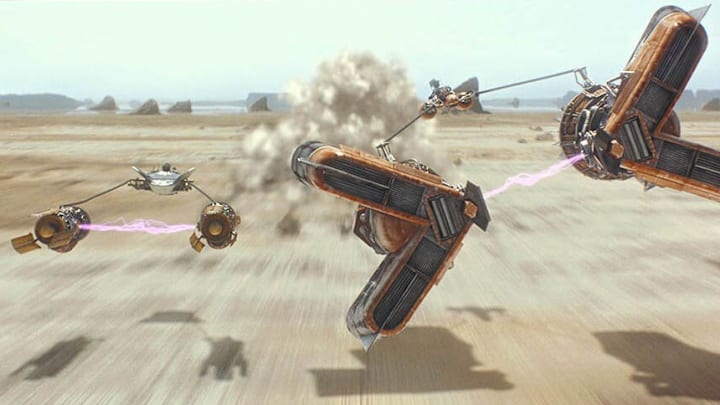The Phantom Menace is 25 years old. The film will always be a bit controversial among fans for a number of reasons, despite many fans who grew up with it and loved it. One reason that made fans grumble is its reliance on visual effects, despite them being groundbreaking at the time. John Knoll, who was instrumental in designing those visual effects, recently broke down some of the film's effects.
The Phantom Menace at 25: John Knoll breaks down controversial VFX
This interview with Knoll is exclusive to StarWars.com and is well worth the read. Knoll breaks down shots from the podrace scenes, how they brought C-3PO to life, and how they shot Naboo's beautiful capital of Theed. He has great insights on all of it and talks about what he learned from George Lucas along the way. It was a challenge from the start, as ILM was going something that had never been done before:
"For The Phantom Menace, almost every board that we were looking at had something that our tools couldn't currently do: whether it was things like very realistic, fully synthetic terrains, whether it was characters with clothing.... There were all sorts of aspects, page after page, I'm writing 'em all down in a little notebook, and I filled multiple pages with things that were unsolved problems at that point. So that was a pretty eye-opening experience, just the scale of what we were going to have to do."John Knoll
The care and detail that went into the visual effects for Episode I are truly remarkable. It is easy to forget that a lot of the technology they were using was very new and had not been used on such a massive movie before. A lot of the methods they used pioneered visual effects and paved the way for the effects we see in movies and TV shows today.
Of course, this work did not come without controversy. One of the consistent criticisms levied against the Star Wars prequels is their reliance on visual effects. Some feel that this reliance was too stark of a contrast to the original trilogy, which relied more on practical effects given the technological limitations of the time.
What people may fail to understand is that George Lucas was always revolutionary when it came to visual effects. That is why he created Industrial Light and Magic when making the first Star Wars film in the 1970s. He knew that no other visual effects companies were doing what he envisioned for that film.
Lucas has always looked for new, inventive, and risky ways to tell his stories, so the visual effects in the prequels are a natural continuation of that, even if they may contrast stylistically with the original trilogy.
The effects may not be as impressive as they were when the film was first released, but the technology developed and methods employed have had lasting effects to this day. This is thanks in large part to George Lucas and John Knoll and their work on the prequels.
Check out the full John Knoll interview deep diving into the effects of The Phantom Menace over on StarWars.com.
